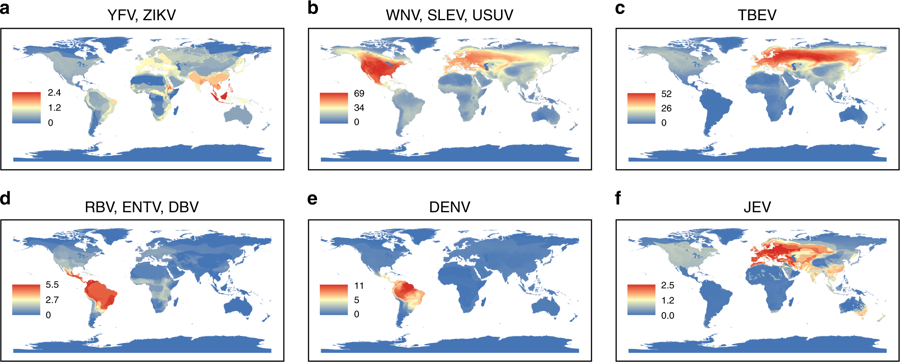Predicting wildlife reservoirs and global vulnerability to zoonotic Flaviviruses
Published in Nature Communications, Accepted, In Press, 2018
Recommended citation: Pranav Pandit, Megan Doyle, Katrina Smart, Cristin Young, Gaylen Drape, and Christine Johnson. "Predicting wildlife reservoirs and global vulnerability to zoonotic Flaviviruses" Nature Communications, 9.

Abstract
Flaviviruses continue to cause globally relevant epidemics and have emerged or re-emerged in regions that were previously unaffected. Factors determining emergence of flaviviruses and continuing circulation in sylvatic cycles are incompletely understood. Here we identify potential sylvatic reservoirs of flaviviruses and characterize the macro-ecological traits common to known wildlife hosts to predict the risk of sylvatic flavivirus transmission among wildlife and identify regions that could be vulnerable to outbreaks. We evaluate variability in wildlife hosts for zoonotic flaviviruses and find that flaviviruses group together in distinct clusters with similar hosts. Models incorporating ecological and climatic variables as well as life history traits shared by flaviviruses predict new host species with similar host characteristics. The combination of vector distribution data with models for flavivirus hosts allows for prediction of global vulnerability to flaviviruses and provides potential targets for disease surveillance in animals and humans.
